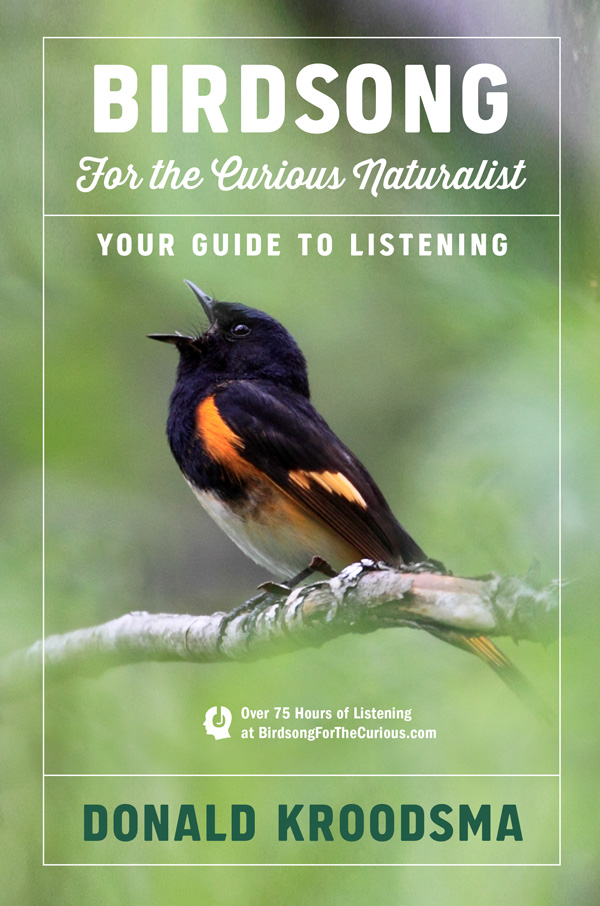Marsh wren
Chapter 5: More about Song Learning
Subchapter: Song (and call) matching
From page 60 in the book.

Photo by Brian E. Small
♫227. Song matching, example 1. May 22, 2009. South Slough National Estuarine Research Reserve, Charleston, Oregon. (6:14)
♫228. Eight examples of song matching excerpted from ♫227. May 22, 2009. South Slough National Estuarine Research Reserve, Charleston, Oregon. (0:37)
♫229. Song matching, example 2; focus on the seven matches that occur during the following times: 0:00 to 0:03, 0:21 to 0:25, 0:26 to 0:31, 0:34 to 0:37, 0:41 to 0:45, 0:45 to 0:49, and 1:18 to 1:22. June 23, 1994. Lee Metcalf National Wildlife Refuge, Stevensville, Montana. (1:25)
♫230. Over several days, to illustrate how neighboring males often match each other during countersinging, I worked to record simultaneously two neighboring males in a drainage ditch beside the road. Alas, although the two males seem to take turns singing, indicating that they are listening to each other, I can hear very little, if any, song matching in these exchanges. How disappointing, yet how illuminating. When and why marsh wrens choose to play the matched countersinging game remains a mystery! June 10, 2018. Sierra Valley, California. (10:57)
♫231. Nearly an hour of singing from one male. I did my best to hold the parabolic reflector on him, but he at times escaped my aim for a few seconds. Enjoy the "raw" field recording—this is the best that I could do with this male as he flew up and down the drainage ditch beside the road. Enjoy a good, easy listen, but there's so much you could do to search for patterns in this male's behavior. June 10, 2018. Sierra Valley, California. (58:10)
♫232. Here's evidence that the male in the previous recording is capable of repeating himself, that is, he has a set repertoire of discrete song types that he can recall from memory and sing again. Four examples of one song type are extracted from the nearly hour-long recording (the four renditions of this particular song were found at 2:06, 9:18, 30:30, and 42:51; the song at 13:18 is slightly different). June 10, 2018. Sierra Valley, California. (0:18)
♫233. Not only does a male eventually repeat one of his songs, but the sequences in which he delivers his different songs are often the same as well. Here, I've taken the four examples from ♫232 and included the next two songs as well; careful listening (and sonagram study) reveals that he sings A B C . . . A B C . . . A B D . . . A B D. Song A is always followed by song B, which is followed by either C or D. June 10, 2018. Sierra Valley, California. (0:41)
